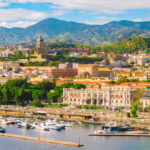A major maritime catastrophe happened in the North Sea on March 10th when the US-registered tanker Stena Immaculate, carrying aviation fuel, collided with the Portuguese-flagged cargo ship Solong. Striking the cargo ship, the tanker was anchored sixteen miles (26 km) off East Yorkshire. Along with almost 17,000 barrels of jet fuel lost, the collision caused significant damage to both boats and fires spanning many days. As the parties engaged in the aftermath of this terrible catastrophe negotiate their legal claims, investigations, and search for responsibility, the incident has set off a sequence of events.
The environmental and safety issues the North Sea collision highlights as well as the sad results for the crew have caused general concern. An outline of the collision, the legal actions pursued, and the continuous inquiry into the event may be found in this page.
Which legal claims have been made?
Following the North Sea collision, both sides engaged have launched legal claims related to the occurrence. Thursday saw the Solong owners and demise charterers file a legal action against the Stena Immaculate’s owners and demise charterers before the Admiralty Court in London. This legal action was started to handle the liabilities and damages resulting from the collision. One of the main steps in settling the conflict was that the claim was made during the court procedures following the crash.
The legal actions fit a larger series of procedures connected to the collision on the North Sea. The co-owners of the Stena Immaculate, Stena Bulk, and Crowley, separately claimed earlier in the week against Solong, Ernst Russ. The assertions draw attention to the intricacy of the matter since both sides want to assign blame and handle crash consequences. The Solong proprietors have said they are dedicated to following the legal procedure and supporting inquiry into the occurrence.
Regarding the claim, Ernst Russ’s spokesman said, “The Solong owners have filed a claim in the Admiralty Court in London as part of the legal proceedings resulting from the North Sea collision between the Solong and Stena Immaculate. This is the normal procedure for significant maritime casualties and marks yet another stage in the direction of the end of this sad event. Ernst Russ keeps providing all the required help in line with the continuous investigations. The statement underlines the company’s participation in the continuous investigations to guarantee that all pertinent information of the crash is examined.
The assertions made by both sides fit the long-standing procedure of handling marine mishaps. The complicated character of maritime law and the worldwide spread of shipping activities mean that legal conflicts such as these often take years to settle. The involvement of several parties—including ship owners and charterers—complicates the procedure even more.
How much damage resulted from the collision?
Both of the vessels engaged suffered considerable damage from the North Sea accident. Stena Bulk claims the collision and ensuing fire caused the ship to lose 17,515 barrels of jet fuel. Since the ship was transporting a dangerous substance, aviation fuel, the loss of fuel poses a major environmental and economical issue. The episode also begged issues regarding the safety of maritime activities in the area and the efficiency of emergency response systems.
Following the accident, the Solong burned for a protracted length of time. The fire seriously damaged the container ship and persisted for a week following the collision. On the Friday following the disaster, the Solong finally arrived at Aberdeen, Scotland; nonetheless, the fires on the ship kept people under constant worry.
The damage to the ships and the environmental hazards connected to the fuel leak have attracted a lot of attention to the safety and regulatory policies in the shipping sector. Both of the ships involved in the North Sea collision are presently under major repairs; the whole degree of damage is yet unknown.
Is there any missing crew member or casualty?
Although the North Sea accident produced a massive rescue effort, saving the lives of 36 crew members from the Stena Immaculate and the Solong, the catastrophe was not without deaths. One crew member on the Solong, Mark Pernia, sadly is missing and thought dead. Reportedly, in the forward section of the cargo ship at the moment of the collision, he was unable to flee the subsequent fire. As his family and colleagues wait for more information, his absence has brought a dark note to the already sad occurrence.
Emergency services acting fast to save the lives of people on both vessels made the rescue mission an incredible endeavor. Still, Pernia’s disappearance reminds us sharply of the dangers inherent in maritime operations and the terrible results of events like the North Sea disaster, notwithstanding all of these measures.
The legal and investigative investigations on the occurrence will probably concentrate not only on the liabilities and damages resulting from the collision but also on Pernia’s death’s responsibility. Maritime law’s worldwide character means that the search for his disappearance and suspected death will most certainly include several authorities and legal systems.
What did the inquiries expose?
The Marine Accident Investigation Branch (MAIB) started looking into the reason of the North Sea coforision in the aftermath. Published on Thursday, the MAIB’s interim report turned up some important results. One of the most important discoveries was that, despite the “patchy conditions” in the area, neither of the vessels engaged in the collision had a “dedicated lookout”.
One of the main problems the research reveals is the lack of a dedicated lookout. It implies that both ships might not have followed optimal standards for navigation and safety under demanding circumstances. The research emphasizes the need for more awareness of safety procedures in like conditions and more alertness. An examination of the reasons for the crash and the part every vessel contributed to the disaster is still in progress by investigators.
Responding to the interim assessment, Crowley, the operator of the Stena Immaculate, said that, at the time of the collision, the vessel was by all relevant watch-standing safety rules and business procedures for a moored vessel. “We are confident the forthcoming comprehensive investigation report will clarify the facts and circumstances of the incident, demonstrating that Crowley exercised appropriate vigilance,” stated a Crowley spokesman.
Notwithstanding this comfort, the inquiry is still under way, and the final report probably will include a more thorough examination of the elements causing the North Sea incident.
What are the legal ramifications of this incident
Legal claims and civil lawsuits, the North Sea incident has generated criminal allegations. Connected with the death of Mark Pernia, Vladimir Motin, 59, from Primorsky, St Petersburg, Russia, has been charged with gross negligence manslaughter. Motin is scheduled to stand trial next year, and the court procedures will probably clarify his behavior preceding the collision.
Serious and reflecting the seriousness of the matter are gross negligence manslaughter charges. Should Motin be found guilty, he might be subject to heavy fines and jail. The trial will center on whether Motin neglected proper safety protocols during the North Sea collision and whether his conduct led to the deadly result.
Which actions the engaged parties are following?
The parties engaged in the North Sea collision are acting to control the financial and legal fallout as the legal procedures develop. Solong owners Ernst Russ have set aside money to handle any confirmed legal claims resulting from the incident. The fund is meant to guarantee timely compensation for the parties impacted by the tragedy and to support claims pertaining to the crash financially.
The continuous inquiries and legal proceedings underline, meantime, the need of responsibility in the maritime sector. The complicated character of international shipping activities implies that several entities—including ship owners, charterers, and operators—must cooperate to address the aftermath of events like the North Sea disaster.
As the investigations and legal procedures go on, it will become obvious the whole scope of the losses, liabilities, and legal obligations resulting from the North Sea incident. Working to tackle the immediate issues and guarantee a fair and responsible resolution of the occurrence, the relevant parties are ensuring their integrity.








